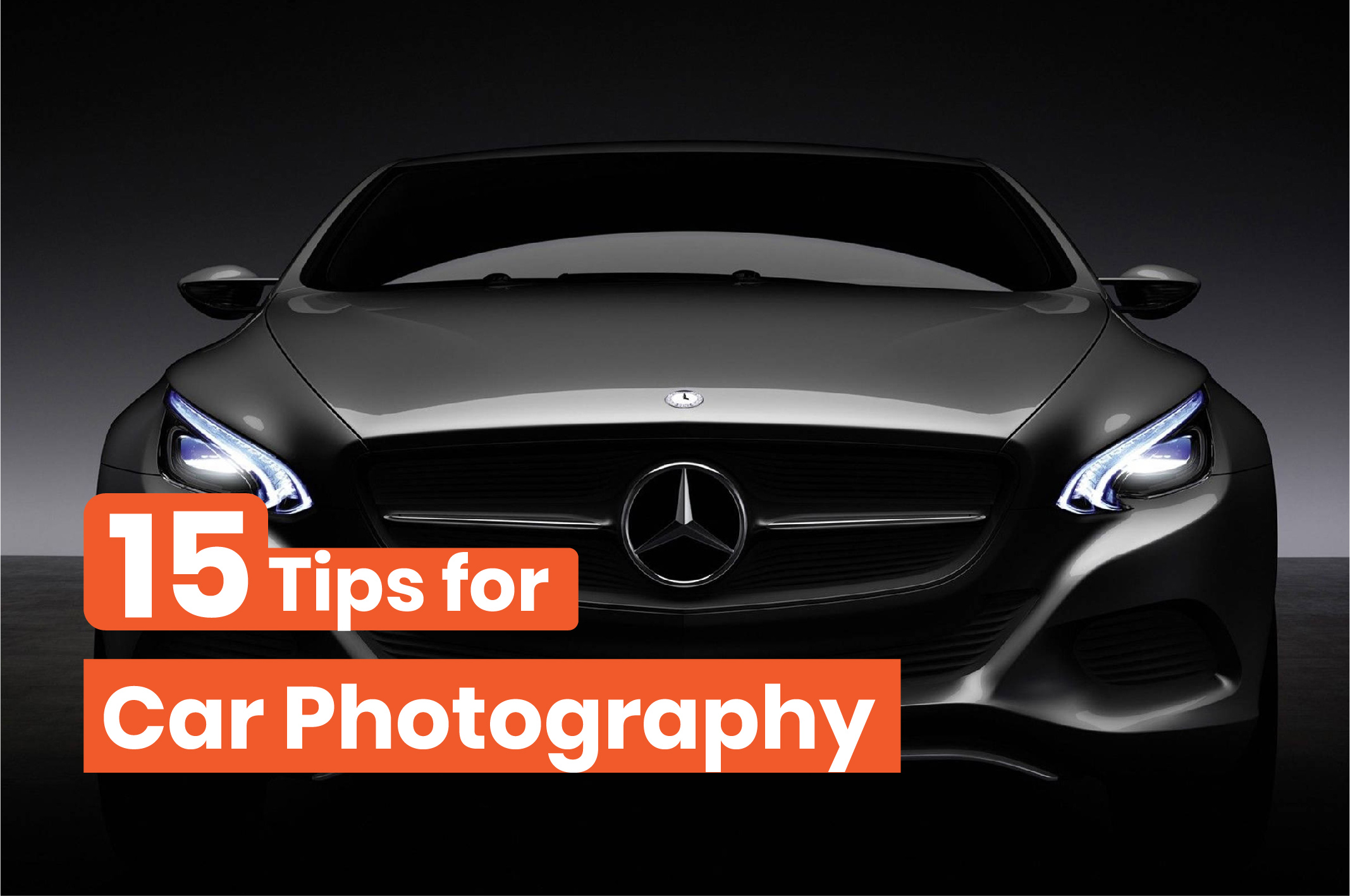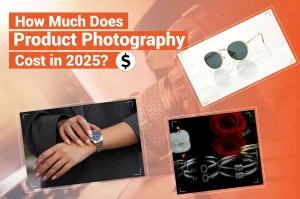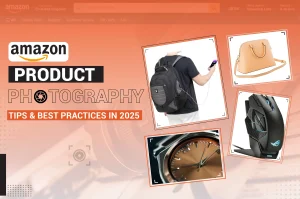A professional car photographer knows exactly the tricks and tips for car photography and how to capture fleeting moments of emotion and create transient, evocative scenes. When it comes to shooting captivating automobile images, you need a blend of technical skills, personal artistic vision, and rigorous groundwork.
In addition, patience is the most powerful virtue for becoming a pro-level car photographer and they sometimes generate car photography ideas by themselves. Also, you need to use observation and anticipation skills to take better photos. In this post, we will share some pro automotive and car photography tips to stand out from the crowd and elevate your photography skills. Let’s dive in without further ado!
Let’s Jump into the Top Car Photography Tips You Can Use!

01. Dig Into the Specs for Each Car Model
- Every car is unique. After all, the manufacturer is targeting a specific class of people. A car photographer must know what shots these groups of customers are expecting.
- As a pro-automotive cameraperson, your photos of cars should be tempting enough to attract these people.
- However, you can’t use the same automotive photography technique for all models. Learn the key specifications of the vehicle. You must highlight these essential characteristics of a car in your automobile photoshoot.
- It can be a sleek design, speed, off-road performance, safety features, or other innovative technologies.
- For example, highlight important areas for an off-road vehicle, such as suspension, all-terrain tires, ground clearance, 4WD system, etc. These things are important tips for car photography.
02. Gear Up with the Right Tools for Snapping Killer Car Shots
When it comes to specialized car photography, gears play a huge role. They can help you take professional-grade shots with better technical quality. High-end photography equipment makes the act of capturing images slightly easier.
- For example, you need a powerful mirrorless or DSLR camera to capture high-resolution images with sharp details.
- A digital camera with a slightly wide-angle lens can help you introduce more perspective features of the vehicle. You can exaggerate the size even after getting very close to the object.
- The standard focal length of a lens should be around 35mm to 50mm. However, it can be as low as 24 mm to capture wide shots in tight spaces for dramatic low-angle shots, such as garages, showrooms, etc.
- In contrast, the lens focal length can be as high as 85 mm to take detailed close-up shots and create a cinematic look. You may also need external flashes or reflectors, polarizing filters, ND filters, etc., for better photography of automobiles.
03. Catch the Golden Glow while Shooting During Magic Hour
Do you have a habit of taking photos during the midday sun? It can make your car images with glare, drastic shadows, blown highlights, too-much contrast, or washed-out colors. Avoid taking photos between 10 am and 2 pm. It is known as the harsh overhead sun. The basic essential car photography tips is to take shots of golden glow moments.
So, what is the golden hour for capturing car photos? It starts or ends within 1-2 hours of sunset or sunrise. Wise car photographers utilize this golden hour. It can create soft, warm light without intense glare and harsh shadows. Photographing automobiles during this magic hour can help you improve the color quality, lighting, and mood of your vehicle pictures. The photo will look more visually appealing.
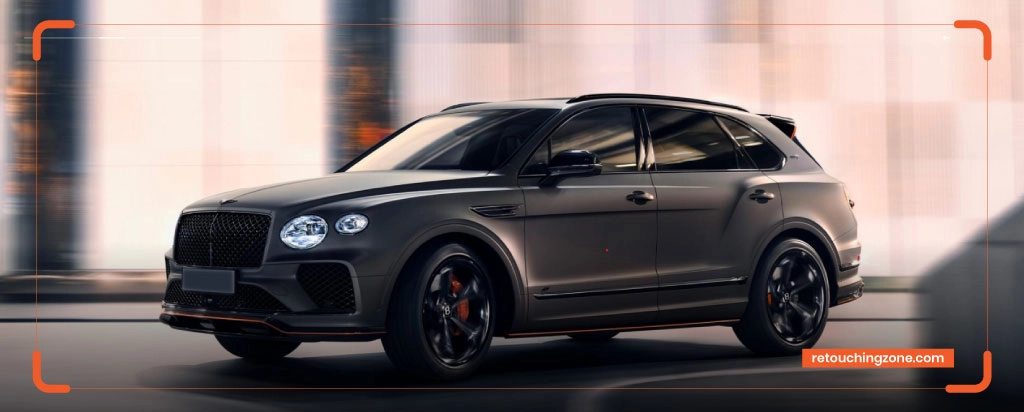
04. Adjust the Camera Settings to Nail Every Scene
There is no hard and fast rule for camera settings in car photography, however, camera settings for car photography play a crucial part. The best camera settings will vary depending on various conditions, such as desired depth of field, lighting conditions, motion, etc.
- However, there are some standard guidelines for automotive and car photography tips. For instance, the f/2.8 aperture offers a better value for capturing images with optimal sharpness. Besides, it makes the back half fall out of focus and helps you highlight the vehicle’s design and details.
- 1/80 seconds of shutter speed is a good starting point for automotive photography. It creates an outstanding blur in the background while adding enough lighting to the image. But if you want to freeze the motion, use 1/4000 s for better control.
- An ISO of 100 is a standard choice for capturing clean, sharp shots with minimal noise. However, if you shoot during cloudy days with imperfect light, ISO 400 appears better.

05. Watch Rough Reflections that Make Star of the Show
Most cars have reflective surfaces for better visibility. They may add unwanted reflections and distract the automobile’s design and details.
- For instance, a vehicle’s features or design lines are a key attribute defining its overall shape. Rough reflections may disrupt observers from seeing around corners of the corners.
- Buildings & poles, trees & bushes, cloud patterns & sky variations, street signs & billboards can cause unwanted reflections. Keep your eyes peeled for chrome glare.
- Take the car photos in an open field or an ocean to avoid unnecessary reflections and distractions. Don’t let your own shadow be a problem in your vehicle photography. Maintain enough distance. You can use a tripod to position the camera remotely. Plus, a timer or remote shutter release is helpful for better control.
06. Vital Car Photography Tips is to Play with Every Possible Angle
Try different unique angles and perspectives to capture uncommon car photos. It can help you be more creative and highlight various automobile features.
- For instance, a three-quarters angle is a versatile choice for both daily and fancy cars. This go-to shot allows you to creatively bring a vehicle’s design elements, curves, and proportions.
- You can choose a higher viewpoint or an elevated position to shoot a car’s roofline and overall design. It gives you a comprehensive view.
- Another option is positioning your camera close to the ground level. It helps you eliminate distracting elements in the background and showcase fine details.
- Exploring new camera angles to figure out the best car photography angles for automobiles. It improves your automobile photography skills and elevates the car’s appearance. Take your time to shoot as perfect photos as you can.
You may also like to read… 7 Product Photography Tips for Taking Great Photos

07. Shoot the Interior Area to Steal the Show
Don’t just focus on the exterior area of cars. Take photos of the interior zone, like the steering wheel, seats, dashboard, pedals, door panels, etc., to showcase its features, condition, and comfort.
- Keep the doors and windows open to ensure minimal shadows and darkness during vehicle photoshoots. You can also use a large soft light to avoid shadows.
- If you want to capture the vehicle’s inner parts at night, use a lower shutter speed to enable more light in the car interior photography.
- Adjust the ISO setting perfectly to avoid dark environments without adding too much noise and grain. Take enough time to capture steady shots as space limitations exist, especially for two-seater vehicles.
- You can use LED light strips inside the car interior to create additional illumination. This stylish lighting does not just look attractive. They are functional, too. Additionally, a scrim and light bar are handy for shooting during mid-day. It diffuses some of the sun’s natural light and makes it soft.
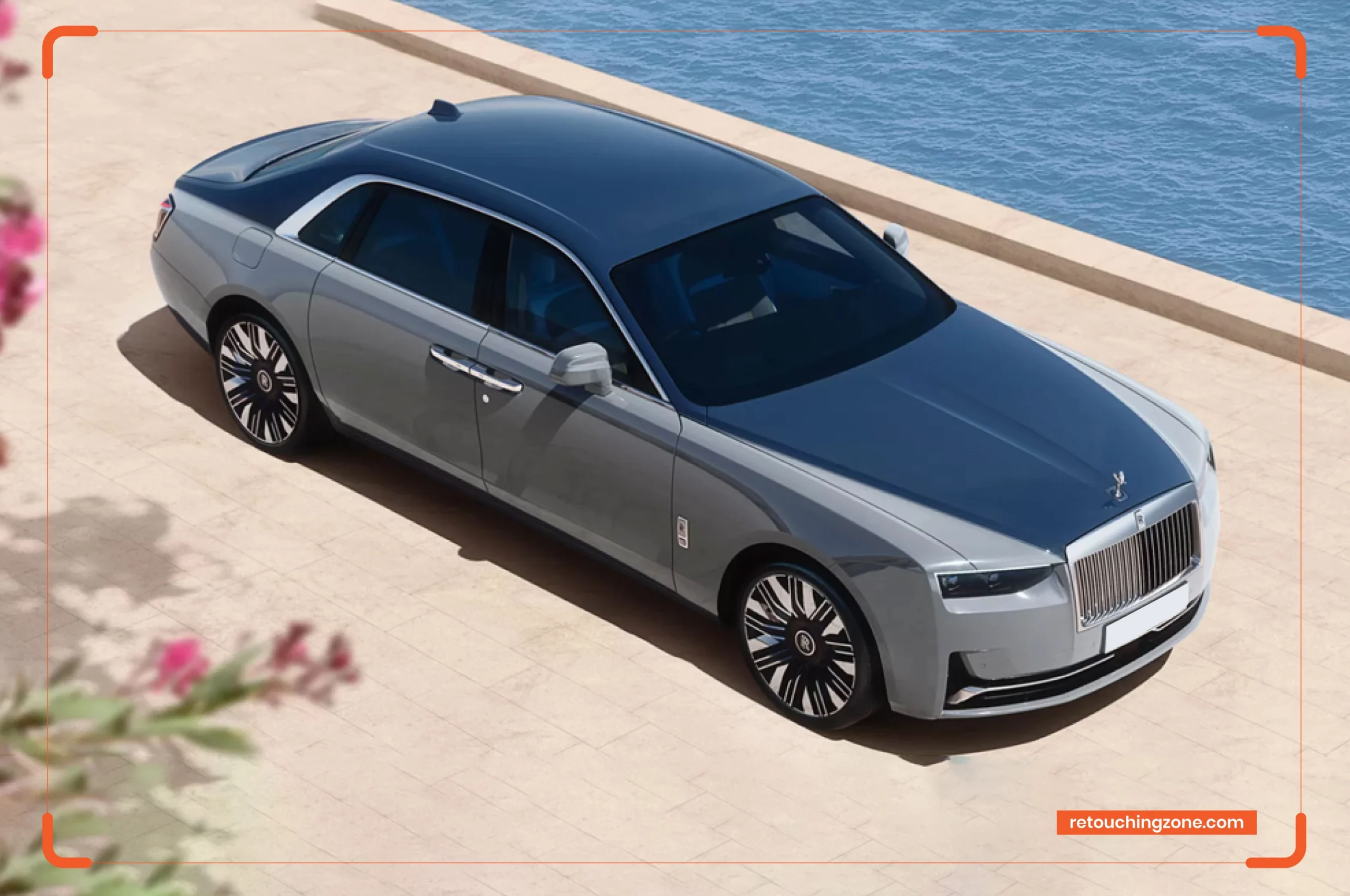
08. Don’t Overlook Wheel-in-motion Shots
Static shots in car photography are essential to highlight a vehicle’s design details, lines, curves, and other attributes. But it doesn’t mean motion shots are useless or less important.
- Capturing a moving car helps you showcase the automobile from different dynamic angles. However, using the proper techniques is the key. For instance, you have to choose a smooth road to reduce motion blur via camera shake as much as possible.
- Besides, both cars must maintain the same speed to utilize slower shutter speeds and take better-quality photos effectively. It can be 40, 60, or even 80 mph.
- The aperture level can be anywhere between f/11 and f/13 to achieve the desired depth of field and image sharpness. It helps you capture a comprehensive view of the moving vehicle.
- What’s more, maintaining around 10-20 feet of distance between the subject car and the photography car is a good rule of thumb.
- In addition, don’t forget to use the continuous high shooting mode to capture the perfect moment from wide selections.

09. Pay Attention to the Car Color
We agree that shooting midday in the sun is not a good choice as per car photography tips for most vehicles. However, the rule doesn’t apply to all.
- The key to automobile photography is pushing your boundaries and exploring different angles, lighting conditions, and compositions. Keep your focus on bringing the best of the vehicle’s design and character through your shots.
- If your automobile color aligns well with the natural lighting, this can be shooting a vehicle at midday in the sun.
- The best practice to get a perfect click is chasing the light from dawn to dusk. Keep no hour left behind! We know it sounds weird. But going beyond your comfort zone helps you achieve extraordinary images. So, the choice is yours being exceptional or being typical.

10. Choose a Backdrop That Makes the Car Pop
A background can either make your car image visually appealing or ruin it. The solid rule of thumb is to select a clean, uncluttered background. But of course, it must portray the automobile’s personality or the exact story you want to tell customers.
- But you have to dig deeper and experiment with all possible perspectives. For instance, a sleek blue luxury car with a stunning sunset may coordinate well. In contrast, a red sports car on top of a lush green field may look perfect.
- An opulent background setup like upscale hotels or private estates looks good for luxury cars, such as the Mercedes-Benz S-Class, Bentley Continental GT, Rolls-Royce Phantom, etc.
- Likewise, a vintage automobile pairs well with historic buildings or mid-century architecture. You can use racetracks or coastal roads as a background for sports cars.
- Avoid keeping other model vehicles, power lines & poles, trash cans & litter, etc., in the background. They will otherwise ruin the picture.
You may also like to read… White Background Product Photography: A Complete Guide

11. Required Tips for Car Photography is to Prepare the Vehicle Perfectly
Preparation is the key to a perfect car photo shoot. A few dirt and smudges on the automobile’s surface can ruin the entire image. Go for several washing and cleaning sessions to remove every piece of grime and give it the best look.
- Don’t just work on the exterior areas. Clean the interior parts to enhance the vehicle’s aesthetic appeal.
- If you can’t remove some scratches or marks, let it be. Focus on key feature-based areas. Adjust the camera angle and frame settings to highlight them and hide imperfections.
- The best part is that you will save a lot of time during your post-production process. You won’t have to work on removing those blemishes. The more perfect your captured shots, the less time you need to edit those images.
12. Shoot Wide-Lens Glory, Then Chase the Close-up Story
A versatile car photographer knows how to adapt to different circumstances, fields, and styles. It enables them to grab every possible opportunity and capture a wide variety of car images.
- Wide-angle shots and close-up shots are both necessary for capturing a comprehensive view of a vehicle.
- Wide-angle lenses take photos of the entire vehicle along with the surrounding area, whereas medium shots cover the majority of the car’s body.
- However, you can’t ignore the importance of close-up shots. It can draw potential customers’ attention by showing greater detail to the viewers. Photographers use this technique to capture details like wheels, grilles, interior stitching, headlights, badges, etc.
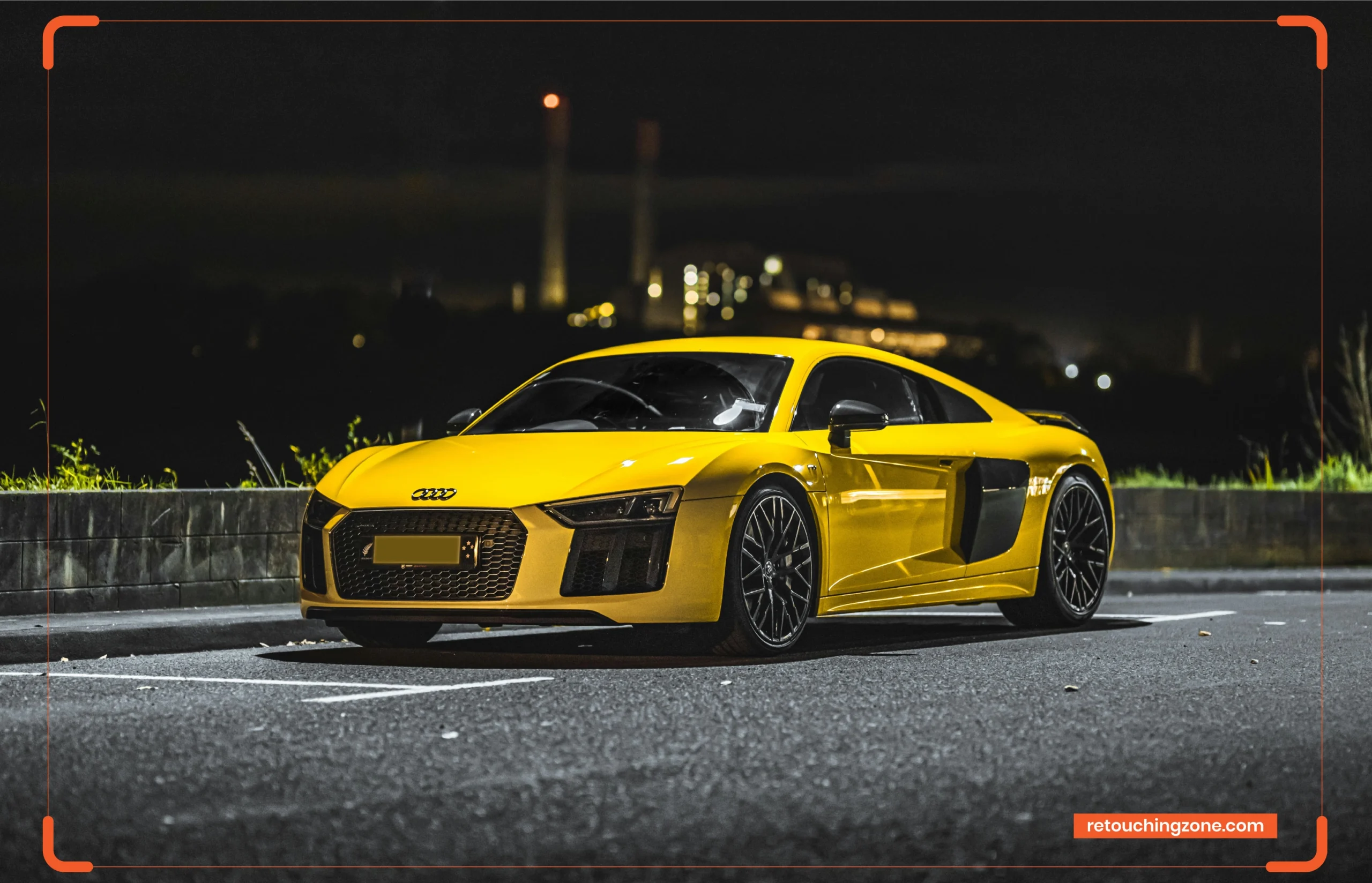
13. Use Nighttime Lighting for Pictures
We have already discussed shooting in the early morning, daytime, and before sunset. But what about nighttime automobile photography? Are there any car photography tips for nighttime?
- If you want to take shots of unique elements of a vehicle, low-light conditions can be a perfect choice. It can help you portray the beauty, power, and elegance of the automobile.
- Select a location with ample night lighting to improve visibility and ambiance. It can be a gas station, a neon sign, or a city light. You can use handheld LED lights to create dramatic effects and get more control over lighting. It also eliminates harsh reflections.
- Shooting cars at night may cause an array of glares and reflections from different lighting sources. A circular polarizer comes in handy to cut down unwanted reflections and glare. It also improves colors and contrast.
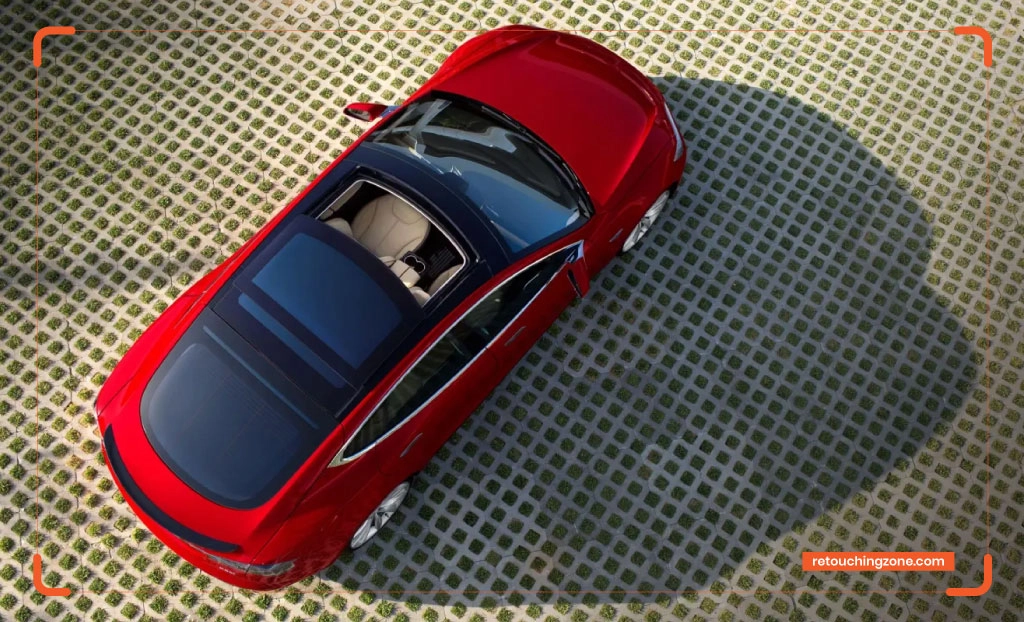
14. Use a Drone Camera as per Car Photography Tips
Why limit yourself to only traditional car photography methods? Why don’t you try modern aerial photography techniques?
- When it comes to creating immersive experiences and getting unique aerial perspectives in car photography, drones are one of the top choices.
- Photographers can utilize elevated angles and hard-to-reach vantage points in drone cameras. It helps them to create dynamic and engaging compositions that are unattainable from ground level.
- Make sure to select a perfect location that aligns perfectly with the car. It can be a coastal area, urban landscape, industrial zone, or historic site. Plus, you can’t overlook the environment and the weather conditions.
- Adjust the drone camera’s angle, distance, and framing setting perfectly to capture visually interesting images.
You may also like to read… Top 10 Amazon Product Photography Companies in the UK 2025

15. As per Car Photography Tips Give More Effort in Post-production
No matter how pixel-perfect your car shots are, they need at least a few minutes of editing. Adjust the white balance and color temperature for a natural and accurate appearance. But avoid over-saturating the color.
- Manipulate the shadow of the vehicle to give it a unique appearance and add depth. Remove unnecessary objects, such as marks, posts, etc., on the ground to maintain the focal point of the automobile.
- Slightly brighten the car’s wheels to enhance their clarity and gloss. Edit the brand logo appropriately. It must show the logo’s original color without glare or imbalanced exposure.
Similar Reads for You
Frequently Asked Questions
What focal length minimizes distortion in car images?
Most professional car photographers suggest maintaining 27-35mm or slightly longer focal lengths to reduce distortion in car images.
In Car Photography Tips, Why is it Important to Capture Multiple Angles of a Car?
Taking photos of a vehicle from different angles helps you showcase different aspects of a car’s design. Customers will better understand the shape, proportions, and features.
What are the benefits of using a tripod in car photography?
A functional tripod can help you avoid unwanted moving or shaking in your automotive photography. It aids in maintaining better stability and clarity.
How can polarizing filters improve car photographs?
Polarizing filters effectively minimize reflections and glare. They also improve the contrast and color of a car photo and dramatically change the vehicle’s appearance.
What is the best time to shoot car photos?
It can be anytime during the day, depending on what type of image you want to achieve. However, the golden hour for shooting car photos is the hour after sunrise and before sunset.
Conclusion
A new car photographer must first acquire basic photography knowledge. However, mastering automobile photography techniques takes years of practice. You will get to learn the nuances of lighting, composition, and vehicle design. We have mentioned how to do car photography with some advanced car photography tips to elevate your car photography skills and help you capture powerful and enticing vehicle images.

